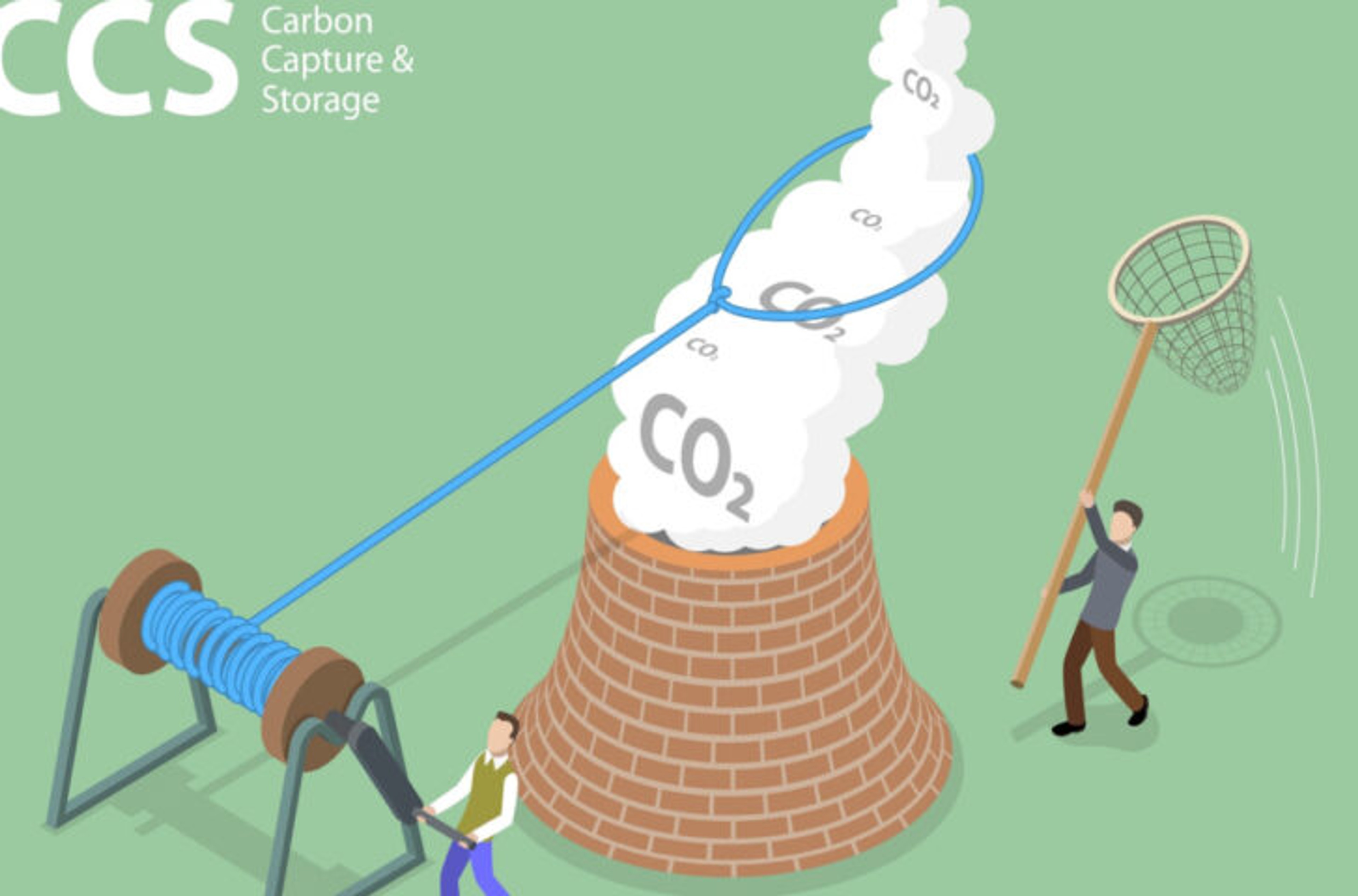Longship and Northern Lights: Carbon Capture, Transportation and Storage in Norway
Exploring the Longship project and its implications for carbon capture and storage in Norway.

Building on Norway’s experience with carbon capture and storage (CCS) from the 1996 Sleipner project, the Norwegian Government published the whitepaper «Longship – Carbon Capture and Storage» (Nw: Langskip – Fangst og lagring av CO2) on 21 September 2020 regarding the launch of a full-scale carbon capture, transportation and storage (CCTS) demonstration project offshore of Bergen, Norway. The commitment to the Longship project was renewed last week when the Norwegian Government allocated 3,58 BNOK to the project in the 2023 state budget.[1] Being amongst the first of its kind, the Longship project aims to research and develop CCTS technology, business and industry chains to legitimize CCTS as an efficient greenhouse gas mitigation measure. This article addresses certain of the legal and commercial challenges that the Longship project must overcome to realize this ambition. To this extent, the article also recommends certain amendments to the regulatory framework that mitigate these challenges and facilitate more efficient CCTS realization.
1 The longship project and the role of northern lights
The Longship project encompasses research and development of all three phases of CO2 handling: (a) capture, (b) transportation and (c) storage. Regarding phase (a) capture, the project cooperates with Norcem AS, a cement producer, Hafslund Oslo Celsio, a waste incineration/energy recovery plant, and Yara’s fertilizer factory in Sluiskil, Netherlands. These companies plan to use different capture technologies to capture up to 400,000, 400,000 and 800,000 tons of CO2 each year respectively.[2] [3] [4] The captured CO2 will be liquified for subsequent transportation and storage.
For the phases (b) transportation and (c) storage, the Longship project cooperates with Northern Lights, a joint venture between Equinor ASA, A/S Norske Shell and Total E&P Norge AS. Northern Lights transports the liquified CO2 by ship from the respective pick-up points to the receiving terminal in Øygarden, Norway. Here the liquified CO2 is injected into pipelines and transported to the offshore storage site 2 600 meters below the seabed. The storage site has an estimated yearly storage capacity of 1.5 million ton CO2, with a possibility to expand its yearly capacity with further 5 million ton of CO2.[5]
2 Financial Risks generated from the regulation of carbon capture transportation and storage
The CO2 Storage Regulation[6] and the EU Emissions Trading System (EU ETS) regulations imply certain material financial risks for industry stakeholders, including: (i) the fluctuating price of emissions allowances under the EU ETS, (ii) the lack of regulations on CO2 transportation by ship and (iii) the uncertain long-term financial liability of the storage operator.
2.1 Fluctuating EU ETS allowance prices
Firstly, industries subject to the EU ETS may offset captured CO2 from their yearly CO2 emissions when the captured CO2 is transferred to listed installations under the EU ETS. In these instances, industries profit by either selling excess emissions allowances or by not having to buy allowances to cover the transferred CO2. Thus, industry stakeholders have an economic incentive to mitigate CO2 emissions with carbon capture technologies. The strength of this incentive is, however, dependent on the allowance price. If the allowance price for one ton of CO2 is lower than the costs of capturing one ton of CO2 using carbon capture technology, an efficient stakeholder will buy the allowances rather than mitigate the CO2 emissions with carbon capture technology.
As the price of allowances is determined by the market and, hence, fluctuates according to supply and demand of allowances, it is difficult for stakeholders to estimate whether it will be profitable to invest in carbon capture technology going forward. This lack of foreseeability regarding future profitability weakens emitters’ financial incentive to invest in CCTS. Therefore, state subsidies, which hopefully will encourage the industry to decrease the long-term costs of CO2 capture technology, are required to incentivize CCTS investment.
2.2 Lack of regulations on CO2 transportation by ship
Secondly, neither the CO2 Storage Regulation[7] nor Article 49 (1) of the EU ETS Monitoring Regulation[8] explicitly list transportation of CO2 by ship as a means of offsetting CO2 emissions. Therefore, it has been claimed in legal theory that CO2 emitters cannot legally subtract captured CO2 from their yearly emissions report when the captured CO2 is transported to the permanent CO2 storage facility by ship.[9] [10] To address this issue, The Norwegian Environment Agency (the Agency) asked, and the European Commission (the Commission) subsequently confirmed that CO2 emitters are allowed to subtract captured CO2 that is transported to the permanent CO2 storage facility by ship under Article 49 (1). The Commission’s answer is based on the same reasoning that the European Court of Justice (ECJ) based their ruling on in C-460/15 Schaefer Kalk. In this ruling, the ECJ stated that Article 49 (1) must be interpreted as allowing a business to offset CO2 from yearly emissions insofar the transfer of said CO2 truly does not represent emissions.[11] Although the case did not deal directly with CO2 transportation by ship, ECJ’s ruling may be interpreted as allowing businesses to offset captured CO2 in instances where said CO2 is transported to storage facilities by ship without leakages.[12]
Despite these interpretative contributions, there is still considerable legal uncertainty regarding the subtraction of captured CO2 that is transported by ship to the permanent CO2 storage facility. Firstly, the Commission’s answer and interpretations are non-binding and ECJ’s ruling in Schaefer Kalk is not directly relevant to CO2 transportation by ship. Secondly, the CO2 emitter may still be liable for leakages that occur under the transportation of the CO2 to the operator of the permanent storage facility.[13] Hence, this legal uncertainty increases industry stakeholders’ investment risks as it weakens their ability to assess (i) whether there may be a risk that their transfer of captured CO2 to transportation ships may not be subtracted from their yearly emissions report and (ii) whether they are liable for leakages during the transportation phase. This may for example be relevant for businesses contracting with Northern Lights that will transport the CO2 by ship to the injection facility.
To ensure sufficient investment incentive in offshore CO2 storage, regulators should expand the transportation definition in the CO2 Storage Regulation and the list in Article 49 (1) of the EU ETS Monitoring Regulation to explicitly encompass transportation by ship and clarify capturers’ liability during the transportation phase.
2.3 Calculation of the size of the required financial guarantee
Thirdly, and finally, the CO2 Storage Regulation mimics the hydrocarbon licensing regime and states that transportation, injection and storage of CO2 require a license.[14] Under this licensing regime, a designated operator is elected that is responsible for the execution of the licensed activities and bears the environmental, climate and civil liability associated with these activities.[15] To ensure accountability, issuance of a license is dependent on the operator providing the Agency with a financial guarantee of its ability to cover these potential liabilities as well as other statutory obligations.[16] There is, however, uncertainty regarding the calculation and size of the financial guarantee. This is due to the operator’s climate liability, which requires it to render emissions allowances for any leakage from the transportation pipelines or storage location. The questions are whether the size of the financial guarantee shall be based on a worst-case leakage scenario and what the future prices of allowances will be.[17] The uncertainty this generates, increases investor risk which in turn is likely to raise investors’ cost of capital. This risk and the associated cost of capital are likely further increased by the similar uncertainty regarding the calculation of the financial contribution that the operator must provide the Ministry of Petroleum and Energy (MPE) to transfer the final responsibility for the CO2 storage location to the MPE.[18] The totality of these uncertainties is likely higher CCTS costs which may render it a less attractive emissions mitigation measure by industry stakeholders. To address these inefficiencies, the Agency and the MPE should clearly specify the method and the leakage scenario for calculating the financial guarantee and the subsequent financial contribution.
3 Conclusions
As described above, the CO2 Storage Regulation and the EU ETS regulations engender certain financial risks that are likely to increase CCTS costs which may render it a less attractive emissions mitigation measure by industry stakeholders. Improvements and legal clarifications should be implemented to facilitate more financially efficient realization of CCTS. Specifically, there is a need for (i) long-term state subsidy commitments, (ii) explicit expansion of the legal CO2 transportation definition to cover transportation by ships and (iii) clarification of the method of calculating storage operators’ legally mandated financial guarantee and contribution. Going forward, it will be interesting to see how the Longship project and Northern Lights mitigate the financial risks posed by the current regulation of CCTS and whether regulators will learn from these experiences and amend the regulation to engender more financial certainty for CCTS investors to allow for cost reductions.
Magnus has an LL.M. in energy and climate law and works primarily with the renewable energy sector where he assists in matters involving energy law and M&A (transactions).
Amund focuses on renewable energy, and assists in acquisitions and mergers within the renewable sector and matters relating to energy law, water resources law and concessions. Amund also has substantial experience within the practice areas real estate and commercial dispute resolution and litigation.
***
Sources
[1] Regjeringen, 3,58 milliarder kroner til framleis satsing på Langskip (regjeringen.no 2022) < https://www.regjeringen.no/no/aktuelt/foreslar-358-milliardar-kroner-til-framleis-satsing-pa-langskip/id2930617/> accessed 10 October 2022.
[2] Regjeringen, Fortum Oslo Varme (regjeringen.no 2022) <https://langskip.regjeringen.no/langskip/fortum-oslo-varme/> accessed 8 September 2022.
[3] Regjeringen, Norcem (regjeringen.no 2022) <https://langskip.regjeringen.no/langskip/norcem/> accessed 8 September 2022.
[4] Kalstad L. & Norum H., Yara signerer kjempeavtale med «Langskip» (NRK 29 August 2022) <https://www.nrk.no/norge/yara-skal-lagre-800.000-tonn-co_-i-aret-hos-_langskip_-selskapet-northern-lights-1.16081617> accessed 8 September 2022.
[5] Regjeringen, Northern Lights (regjeringen.no, 2022) <https://langskip.regjeringen.no/langskip/northern-lights/> accessed 8 September 2022.
[6] Regulation of 5 December 2014 nr. 1517 on exploitation of subsea reservoirs on the continental shelf for the storage of CO2 and on the transportation of CO2 on the continental shelf (hereinafter the CO2 Storage Regulation) which implements Directive 2009/31/EC on the geological storage of CO2 (hereinafter the CCS Directive).
[7] The CO2 Storage Regulation, Section 1-6 (t) and (v).
[8] The Commission Regulation (EU) 2018/2066 (hereinafter the EU ETS Monitoring Regulation) Article 49 (1) is implemented in Norwegian law under Section 2-1 of the Regulation of 23 December 2004 nr. 1851 on Emissions Trading
[9] Holwerda M. & Gazendam J, «Carbon Capture and Storage» In (eds.) Woerdman E, Roggenkamp M. & Holwerda M. Essential EU Climate Law (Edward Elgar Publishing, 2. Edition 2021) ch. 7, p. 183.
[10] Weber V., Are we ready for the ship transport of CO2 for CCS? Crude solutions from international and European law (Review of European, Comparative & International Environmental Law, vol. 30, 3, 387-395), p. 393.
[11] C-460/15, Schaefer Kalk, para. 47-49.
[12] Ibid Holwerda M. & Gazendam J, p. 183.
[13] Ibid Weber V., p. 394.
[14] the CO2 Storage Regulation Sections 2-1, 3-1, 4-1 and 6-1 and Regulation of 1 June 2004 nr 653 on the limitation of pollution (the Pollution Regulation) Section 35-4.
[15] the CO2 Storage Regulation Section 1-8.
[16] the CO2 Storage Regulation Section 5-9 and the Pollution Regulation Section 35-14
[17] Ibid. Holwerda M. & Gazendam J, ch. 7, p. 180.
[18] The CO2 Storage Regulation Section 5-10.
***
Photo: Shutterstock

